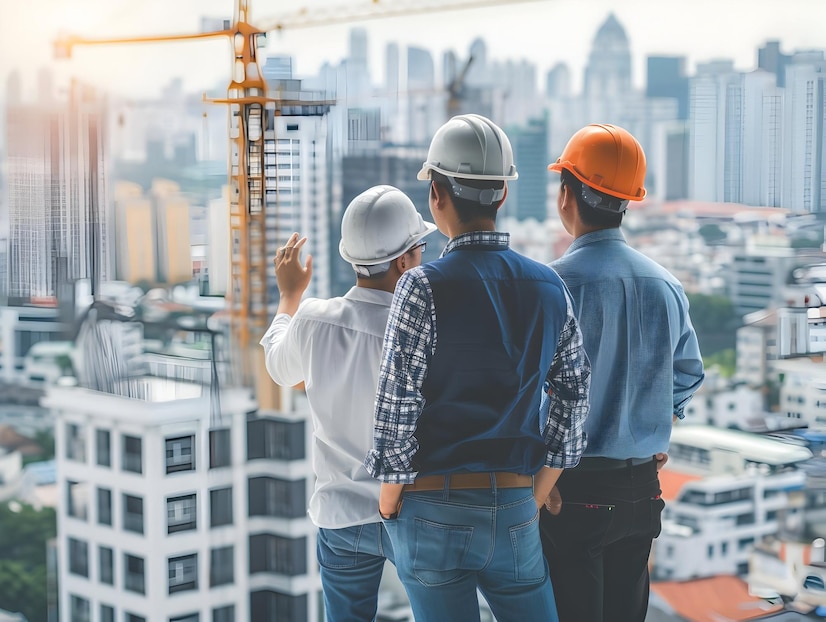The construction industry is a pivotal part of the U.S. economy, contributing about 4.3 percent of GDP and providing jobs for millions of workers. The growing complexity and scale of construction projects bring up technological advances. It is now critical to boosting productivity and ensuring worker safety. This year we have seen some important innovations in the industry, such as Building Information Modeling (BIM) and Artificial Intelligence (AI), which are some of the key construction trends for 2025. They all play their unique parts in improving project management efficiency. Techs like VR safety training and IoT monitoring significantly reduced potential safety risks during on-site construction.
As modern tech integrates, the job market demands multi-functional construction talents. FridayParts believes that workers may learn practical operating skills from new techs including VR, and BMI in the future. With the rising awareness of human rights, the worker’s focus will be on the fundamental rights press. Meanwhile, according to Deloitte U.S. reports, labor costs and raw material prices increased 6% in 2023. It prompted companies to turn to modular construction and prefabricated components to better respond to market changes. Here are 5 top construction trends for 2025. Let’s see.
1. Rising Safety Awareness of Workers
We have all to admit that the emphasis on worker safety is more important than ever. The latest trends in construction safety are not just about hard hats and high-vis vests; they’re about advanced training techniques that prepare workers for real-life scenarios.
Virtual Reality (VR) and Augmented Reality (AR) are becoming staples in safety training programs. Together, they could offer immersive experiences that teach workers how to respond to hazardous situations. These technologies have been proven to reduce accident rates by up to 40%, making them a worthwhile investment for construction firms across the nation.

2. Greener Industry & Sustainable Development
Green is one of the important construction trends for 2025, it’s a commitment to future generations. Some leading construction companies have already taken steps to a greener future. For example, Hitachi Construction Machinery focuses on developing and designing products that help reduce environmental impact. Many of the products are designed to help customers realize their environmental contribution during machinery use. Workers should be happy about the trends because green development is not only a vague concept for the environment but also effectively improves workers’ working conditions.
3. Wide Application of BIM
What is BIM? The abbreviation stands for building information modeling. In brief, it is a collaborative platform that streamlines project management, from concept to completion. By creating a digital representation of a structure, BIM allows for better planning, increased accuracy, and improved communication among project stakeholders. Workers on the ground benefit from BIM’s precision, as it reduces errors and rework, leading to increased efficiency and cost savings. As BIM becomes ubiquitous in 2025, it will reshape the skills required for construction workers, emphasizing the importance of digital literacy and technical know-how.
4. Automation & Robotics
Automation and robotics are changing the landscape of the construction industry, and by 2025, these technologies will be integral to the way we build. By 2025, the involvement of these technologies in construction seems inevitable. While some of you may be concerned that big-scale robot integration will replace human workers, the reality is that for now, they work alongside construction crews, taking on dangerous or repetitive jobs. So for corporations, it’s important to embrace the tech shift and conduct training programs to keep up with the time.
5. Supply chain management& materials innovation
As we look towards 2025, the industry is embracing new strategies to optimize supply chain management. From real-time tracking to just-in-time delivery, advancements in supply chain management are reducing delays and waste. Moreover, the innovation in materials is also revolutionizing construction. A company like CEMEX has already created a range of innovative green building solutions, dedicated to promoting sustainable construction and urbanization. Building materials such as cement, aggregates, and ready-mixed concrete have been used in modern construction.
Conclusion
As we peer into the future of construction, it’s clear that the industry is evolving to meet the challenges of the 21st century. From prioritizing worker safety to embracing sustainable practices, the 5 construction trends for 2025 are not just about building structures; they’re about building a better America. As these innovations take shape, we must continue to value the skilled workers who bring these projects to life, ensuring that their safety and well-being remain at the heart of the industry’s progress.
What do you think about the future of construction? Are there any trends you’re particularly excited about? Share your thoughts in the comments below and join the conversation. By the way, FridayParts is an online construction machinery parts shop. We always keep an eye on the latest trends in the industry and are committed to providing our customers with cutting-edge construction equipment. For more trends and information, welcome to visit FridayParts.com.
